 W
WA seat is a place to sit. The term may encompass additional features, such as back, armrest, head restraint but also headquarters in a wider sense.
 W
WBar stools are a type of tall chair, often with a foot rest to support the feet. The height and narrowness of bar stools makes them suitable for use at bars and high tables in pubs or bars.
 W
WThe Sacco chair, also called bean bag chair, is a large fabric bag, filled with polystyrene beans, designed by Piero Gatti, Cesare Paolini and Franco Teodoro. The product is an example of an anatomic chair, as the shape of the object is set by the user.
 W
WA bench is a long seat on which multiple people may sit at the same time. Benches are typically made of wood, but may also be made of metal, stone, or synthetic materials. Many benches have arm and back rests; some have no back rest and can be sat on from either side. In American public areas, benches are often donated by persons or associations, which may then be indicated on it, e.g. by a small plaque. Benches are used both outdoors and indoors.
A bicycle seat, unlike a bicycle saddle, is designed to support the rider's buttocks and back, usually in a semi-reclined position. Arthur Garford is credited with inventing the padded bicycle seat in 1892, and they are now usually found on recumbent bicycles.
 W
WA box pew is a type of church pew that is encased in panelling and was prevalent in England and other Protestant countries from the 16th to early 19th centuries.
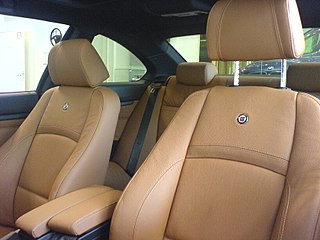 W
WA car seat is the seat used in automobiles. Most car seats are made from inexpensive but durable material in order to withstand prolonged use. The most common material is polyester.
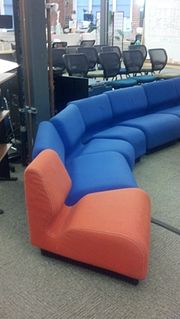 W
WChadwick Modular Seating is a modular sofa that is composed of one or more sections that can be arranged to create long, contiguous seating surfaces for offices and homes. Multiple section shapes were produced in many fabrics and colors. Sections were available in straight, wedge and elbow shapes.
 W
WA curule seat is a design of chair noted for its uses in Ancient Rome and Europe through to the 20th century. Its status in early Rome as a symbol of political or military power carried over to other civilizations, as it was also used in this regard by kings in Europe, Napoleon, and others.
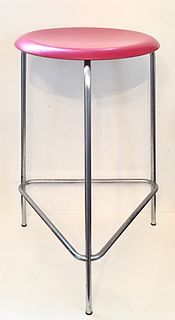 W
WThe Dot stool is an example Danish Mid-century modern seating design. It was designed and developed by Fritz Hansen in the early 1950s and refined for production in 1954 through a collaboration with Arne Jacobsen (1). The Dot stool design was modified in the 1960s by Jacobsen and was produced in 1969 (2)(5).
 W
WIn aircraft, an ejection seat or ejector seat is a system designed to rescue the pilot or other crew of an aircraft in an emergency. In most designs, the seat is propelled out of the aircraft by an explosive charge or rocket motor, carrying the pilot with it. The concept of an ejectable escape crew capsule has also been tried. Once clear of the aircraft, the ejection seat deploys a parachute. Ejection seats are common on certain types of military aircraft.
 W
WA folding seat is a seat that folds away so as to occupy less space. When installed on a transit bus, it makes room for a wheelchair or two. When installed on a passenger car, it provides extra seating.
 W
WIntegrated Memory System allows the driver to adjust the seat positions, side view mirrors as well as other features at the push of a button.
 W
WIn aviation, a jump seat or jumpseat is an auxiliary seat for individuals—other than normal passengers—who are not operating the aircraft. In general, the term 'jump seat' can also refer to a seat in any type of vehicle which can fold up out of the way; vehicles include carriages, automobiles, vans, buses, fire tenders, and taxicabs. The term originated in the United States c. 1860 for a movable carriage seat.
 W
WLinge Ping is a traditional swing constructed during the festival of Dashain mainly in Nepal. The shape of the swing is in the shape of Shiva Linga, hence the name. It is believed that one must leave the ground once a year by riding the swing in the Dashain festival.
 W
WA misericord is a small wooden structure formed on the underside of a folding seat in a church which, when the seat is folded up, is intended to act as a shelf to support a person in a partially standing position during long periods of prayer.
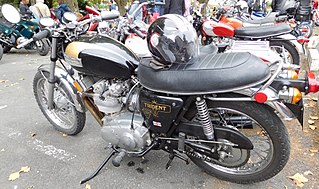 W
WA motorcycle seat is where rider sits, and may also accommodate a passenger.
 W
WPoshti is a backrest cushion upholstered with rug fragments. It is a traditional piece of furniture and part of the Iranian culture as well as Afghan culture. Similar in appearance to a pillow but sturdier in material, poshti can have a square or rectangular shape. It is most commonly a one-piece item placed against the wall, but can come in two identical pieces as well, with one item placed on the floor as a mattress.
 W
WShock-mitigating suspension seats are designed to reduce the severity of vibration and mechanical shock. These seats are used in vehicles that operate in high exposure environments, such as high-speed watercraft, military platforms, construction, forestry and agricultural vehicles, and industrial trucks. A vehicle’s collisions with waves or rough terrain are a source of whole body vibration that may cause discomfort, acute injuries, and chronic pain among operators. The marine environment is particularly severe and people exposed to these conditions may experience unusually high injury rates.
 W
WA stool is one of the earliest forms of seat furniture. It bears many similarities to a chair. It consists of a single seat, for one person, without back or armrests, on a base of a stool there are either one, two, three or four legs. A stool is generally distinguished from chairs by their lack of arms and a back. Variants exist with one, two or five legs and these various stools are referred to by some people as "backless chairs". Some modern stools have backs. Folding stools can become flat, typically by rotating the seat to be parallel with fold-up legs.
 W
WA swing is a seat, often found at playgrounds for children, at a circus for acrobats, or on a porch for relaxing, although they may also be items of indoor furniture, such as the Latin American hammock or the Indian oonjal. The seat of a swing may be suspended from chains or ropes. Once a swing is in motion, it continues to oscillate like a pendulum until external interference or drag brings it to a halt. Swing sets are very popular with children.
 W
WThe Taíno ritual seat is a Pre-Columbian wooden seat made in the form of a man on all fours. It was made by the Taino people and found in a cave near the city of Santo Domingo in the Dominican Republic. The seat was made before Christopher Columbus landed in the Caribbean and is an important remnant of the Taino culture and civilisation that existed before the arrival of Europeans.
 W
WAn electronic bidet is a seat attached to an existing toilet or a part of the toilet itself, with a nozzle to squirt a jet of warm water for cleaning the anus and female genitals, electrically powered and with electronic controls. It replaces the conventional bidet, a separate plumbing fixture not attached to a toilet. Some bidets of this type have one adjustable nozzle on the side rim for anus and genital areas, or two nozzles on the back rim, a shorter "family nozzle" for washing the area around the anus, and a longer "bidet nozzle" for women to wash their vulva.
 W
WA toilet seat is a hinged unit consisting of a round or oval open seat, and usually a lid, which is bolted onto the bowl of a toilet used in a sitting position. The seat can be either for a flush toilet or a dry toilet. A toilet seat consists of the seat itself, which may be contoured for the user to sit on, and the lid, which covers the toilet when it is not in use – the lid may be absent in some cases, particularly in public restrooms.
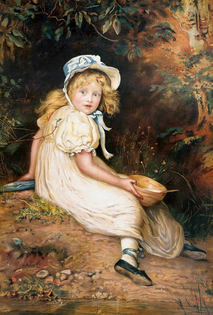 W
WA tuffet is a small grassy mound or clump of grass; or alternatively a low seat.
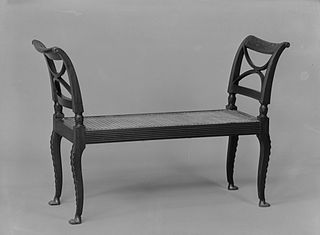 W
WA window seat is a miniature sofa without a back, intended to fill the recess of a window. In the latter part of the 18th century, when tall narrow sash windows were almost universal, the window seat was in high favor, and was no doubt in keeping with the formalism of Georgian interiors. It differed much in decorative detail, but little in form.
 W
WThe Woolsack is the seat of the Lord Speaker in the House of Lords, the Upper House of the Parliament of the United Kingdom. Before 2006, it was the seat of the Lord Chancellor.